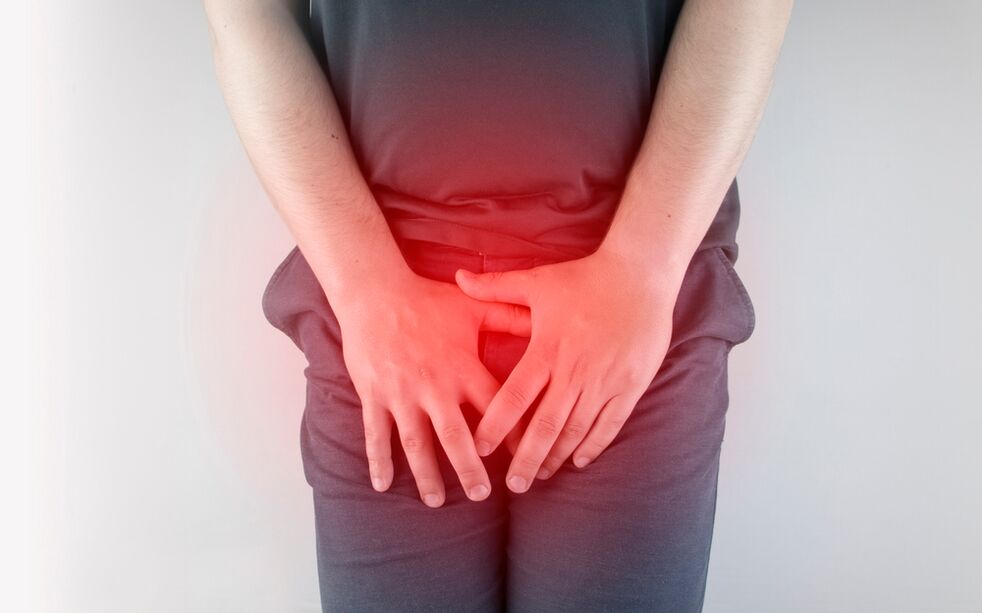The prostate is a small, unpaired organ located in the pelvis below the bladder and in front of the rectum. The thickness of the urethra through the prostate.

The structure and function of the prostate
The prostate is composed of smooth muscle fibers and secretory cells. The main function of the glands is to secrete secretions, which are involved in liquefying semen, ensuring the movement of sperm and protecting them from the aggressive environment of the vagina. The prostate is also a valve that prevents the flow of urine during ejaculation and semen during urination.
The weight of the prostate of a healthy adult man is only about 20 grams. The hormones, androgens, and estrogen of the pituitary gland and adrenal glands have a great influence on his condition. In life, the size of the prostate will change: in boys, it is very small, and during puberty, the prostate will increase dramatically. When the secretion of hormones begins to fade (usually between 45-50 years of age), the reverse development of the glands usually begins.
However, the opposite process often occurs-benign prostatic hyperplasia (BPH) or prostate adenoma.
What is prostate adenoma?

This disease has many synonyms: prostate adenoma, benign prostatic hyperplasia, benign nodular hypertrophy of the prostate, etc.
The name reflects the nature of the pathological process that occurs in the gland: the gland tissue grows to form dense nodules. The prostate increases in size, causing pressure on the urethra and spasm of smooth muscle cells. This can lead to the appearance of disease symptoms.
The size of the prostate has no direct effect on urinary disorders. Symptoms may disappear with a significant increase or appear in the early stages of the disease.
BPH has benign growth, that is, it does not metastasize. This fundamentally distinguishes BPH from prostate cancer. The main reference point for prostate malignant transformation is the level of prostate-specific antigen (PSA).
Causes of BPH
According to statistics, in men under 30, there is usually no sign of BPH. With age, the incidence of BPH increases, reaching a peak at 90 years (90%).
The cause of prostate adenoma is still not fully understood. It is believed that prostate adenomas have a multifactorial nature. The role of the male sex hormone testosterone in the normal growth of the prostate and the development of BPH has long been known. As we all know, men between the ages of 40 and 50 are in the period of most profound hormonal reorganization, while the circulating testosterone levels in the blood have declined. The decrease in the amount of testosterone in men and the relative increase in estrogen (female sex hormone) levels can lead to the growth of the prostate.
The change in the proportion of hormones in the human body is the starting point for studying the causes and development mechanisms of benign prostate hyperplasia. In addition to hormonal disorders, the inflammatory process that accompanies prostate edema is also important in the development of prostate adenoma, because it can play an important role in increasing the number of prostate cells, and organ edema, as a mechanical factor, contributes to the aggravation of disease symptoms.
Symptoms of prostate adenoma

An enlarged prostate causes pressure on the urethra and causes smooth muscle spasm. This process is accompanied by dysuria:
- Need to wake up at night to empty the bladder;
- Decreased urinary flow tension;
- A feeling of incomplete bladder emptying after urination;
- An uncontrollable urge to urinate;
- Increased urination during the day;
- Little urination.
Usually, the above symptoms appear with difficulty at the beginning of urination, which is more pronounced in the morning and makes you feel nervous when you begin to urinate. These symptoms are the reason for seeking medical assistance.
Treatment of prostate adenoma
The course of the disease significantly deteriorates the quality of life, and lack of adequate treatment can lead to surgery. In view of the progressive nature of the disease, drug treatment for BPH should be carried out for a long time. Depending on the prevalence of symptoms, treatment may vary greatly. Drug therapy can eliminate urinary problems, reduce complaints and restore quality of life. You should also be aware that prostate adenomas may have no symptoms, or they may cause non-specific urinary problems that are different from the classic picture of the disease. This can mislead patients and cause them to waste precious time. But the sooner the treatment is started, the better the effect.
Prevent BPH
There is currently no specific prevention method. One of the preventive measures is to see a urologist every year after 40 years. At the time of the appointment, the doctor will be able to assess the symptoms, perform the necessary examinations and prescribe an effective treatment plan.




































